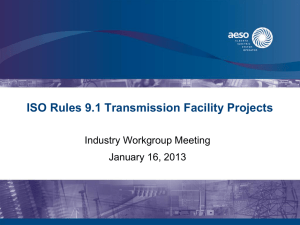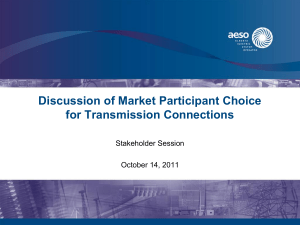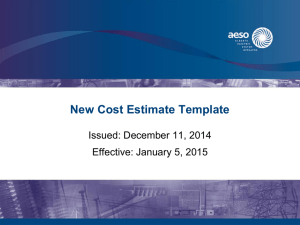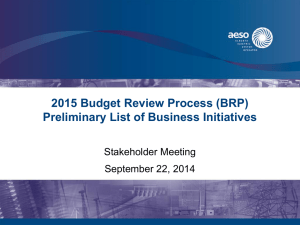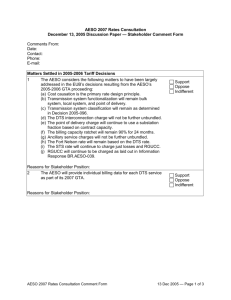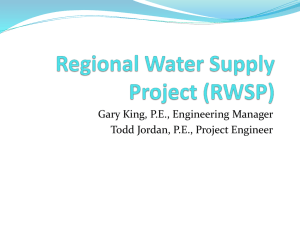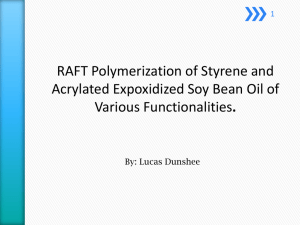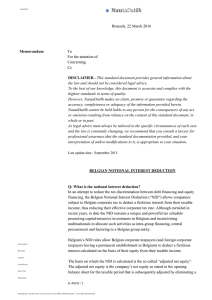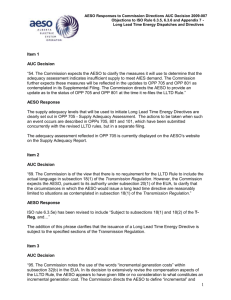NID Estimate Reasonableness Review Checklist
advertisement
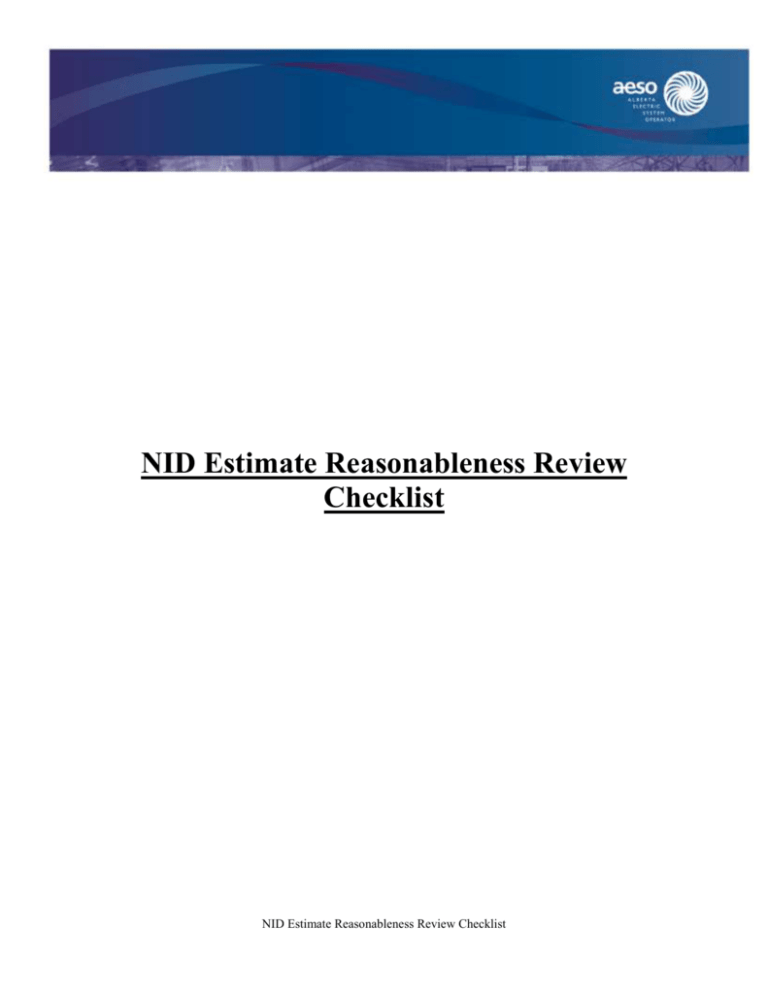
NID Estimate Reasonableness Review Checklist NID Estimate Reasonableness Review Checklist NID Estimate Reasonableness Review Checklist Project Scope 1. Functionality Compare the project information against the AESO functional specification. Does the project information agree with the AESO functional specification or standards? If there are deviations: TFO to identify and list any deviations from the AESO functional specification, standards and the ISO Rules. TFO to include a brief description addressing the rationale, such as key drivers, the need and/or the benefits. Compare the single line diagrams with the AESO single line diagrams and assess whether any deviations are reasonable and acceptable. 2. Standards Clarify the standards were applied or assumed in the development of the estimate. Clarify whether there were any standards applied that exceed good utility practice. 3. Assumptions Review the assumptions and clarify as required (i.e. Estimating Assumptions sheet) in order to determine reasonableness. Regulatory: Will a hearing (Need or Facility) be required? Are hearing costs included, if not what is the rationale? Right of Ways: Are there special right of way considerations, such as existing linear facilities (pipelines1, buried facilities, railway, roads and distribution lines) or environmental areas? Alignment with the land impact assessment. Outages: Confirm what has been done to determine the availability of outages. Confirm with AESO Operations whether there are outage issues and possible restrictions. Procurement: What methodology (i.e. previous project estimates, quotes) was used to determine the cost of material and services? The volume of data used (i.e. how many previous projects). Is the data used recent or dated? Construction 1 PSO can provide a map that shows the existing pipelines in a study area. Refer to link at end of document. Transmission Project Delivery Page 1 Public R1-2011-11-22 Winter versus summer construction and construction requirements. Sub-surface soil. Brushing. Construction period. Logistics (i.e. road bans), accessibility and related information. 4. Transmission Facility Elements Transmission Lines - review and compare the information against the functional specification to determine if the deviations are reasonable and acceptable: Routing (i.e. mosaic drawings) and routing risk. Structure type, structure loading capability and structure standards (i.e. is there a standard for the structure for the loading conditions?). Type of foundation. Line length, conductor type and conductor MVA rating. Rebuilding existing lines and what is the plan (i.e. existing right of way or new right of way). Substations - review and compare the information against the functional specification to determine if the deviations are reasonable and acceptable: Proposed location of facility and preliminary dimensions. Preliminary single line diagram, c/w layout and configuration. Description of major equipment additions and ratings (voltage, MVA, current, BIL). Type of foundations assumed and soil conditions. Green field versus brown field. For brown field, confirm that the capacity of existing substation facilities meet the new capacity requirements. Communications - review and compare the information against the functional specification to determine if the deviations are reasonable and acceptable: Proposed location or modifications at existing sites. Communication medium (fiber, microwave etc) and studies required. Description of proposed development and equipment additions at each site. Standards: list all engineering and design standards to be utilized. Schedule Is there alignment between the schedule and execution plan? Is the sequence of project activities logical and consistent? Is the project start date set correctly? Are the tasks lengths to long, which will make it difficult to monitor and report progress? Critical tasks are outlined in the schedule. Milestones are defined and scheduled. Do we agree with dates identified for AESO milestones and activities? Project in-service date and closure is acceptable. Transmission Project Delivery Page 2 Public R1-2011-11-22 Project Costs 1. General Compliant to the NID Estimate template. Review the individual line items and do the costs seem reasonable or typical for that type of facility. Add up the line items to ensure the numbers match the totals. 2. Bench Marking A comparison of the project costs (transmission lines, substations, telecommunications, owner cost and distributed cost) against other projects will identify areas for further clarification. Compare the costs of similar facilities in the project cost estimate that could identify areas requiring further clarification. For example: Transmission Lines: what is the cost per km each transmission line in the estimate and are the costs within a reasonable range? Substations: review the facility costs for each substation, where the scope of work is similar, and are the costs within a reasonable range? Telecommunications: review the facility costs for each substation, where the scope of work is similar, and are the costs within a reasonable range? 3. Assumptions Review the assumptions and clarify as required (i.e. Estimating Assumptions sheet) in order to determine reasonableness. Confirm: Contingency: included and the percentage used. Escalation: included and the percentage used. Overheads: percentage used for AFUDC and E&S. Salvage: Confirm whether the salvage cost is included in the project. How the salvage is cost being treated as a result of this project. 4. Specific Estimate Items Transmission Lines - review and compare the information to determine if the costs are reasonable and acceptable: Compare the $/km for transmission lines within the estimate or other projects with similar development. Transmission Project Delivery Page 3 Public R1-2011-11-22 Substations – review and compare the information to determine if the deviations are reasonable and acceptable: Compare the $/square meter for the switchyard against similar substations sizes and configuration. Compare the cost of major equipment against the same major equipment within the NID Estimate or other projects with similar development. Telecommunications - review and compare the information to determine if the costs are reasonable and acceptable: Compare the costs between other facilities in the estimate or other projects with similar development. Owner Costs – review and compare the information to determine if the costs are reasonable and acceptable. Depending upon the TFO, there is varying levels of information provided and we should clarify the following: If there is no information provided for owner costs, request the TFO to describe what is included and a breakdown of costs by the items. Is the cost to prepare a Service Proposal included in the estimate; where is it accounted for and what is the estimated cost? Siting; confirm this is the cost for to prepare the facility proposal and the assumptions made in determining this cost. Land; if the costs are substantial we should review these costs and identify any questions to determine reasonableness. Distributed Costs – review and compare the information to determine if the costs are reasonable and acceptable: If there is no information provided for owner costs, request the TFO to describe what is included and a breakdown of costs by the items. Clarify what items are included in the category titled, “Distributed Cost”. Contingency: o What was the methodology used to determine contingency and do we agree that the methodology is reasonable? o If a percentage was used, what is the percentage used in the NID Estimate and do we agree that the percentage is reasonable? Salvage: Confirm whether the salvage cost is included in the project totals. How the salvage is cost being treated as a result of this project? Escalation – the project cost at the in-service date. Does the estimate include escalation? If no, have the TFO redo the NID Estimate that includes escalation. What was the methodology used to determine escalation and do we agree that the methodology is reasonable? If a percentage was used, what is the percentage used in the NID Estimate and do we agree that the percentage is reasonable? Overheads: Overheads: percentage used for AFUDC and E&S. Transmission Project Delivery Page 4 Public R1-2011-11-22 Information Related to the NID Estimate Attachment: NID Estimate Template Link to the NID Estimate Template on the AESO webpage is: http://www.aeso.ca/downloads/Needs_Application_Cost_Estimate.xls Link to the PSO Mapping Function Map Request Form (AESO use only): http://watercooler/files/Map_Request_Form_R1.pdf Transmission Project Delivery Page 5 Public R1-2011-11-22
